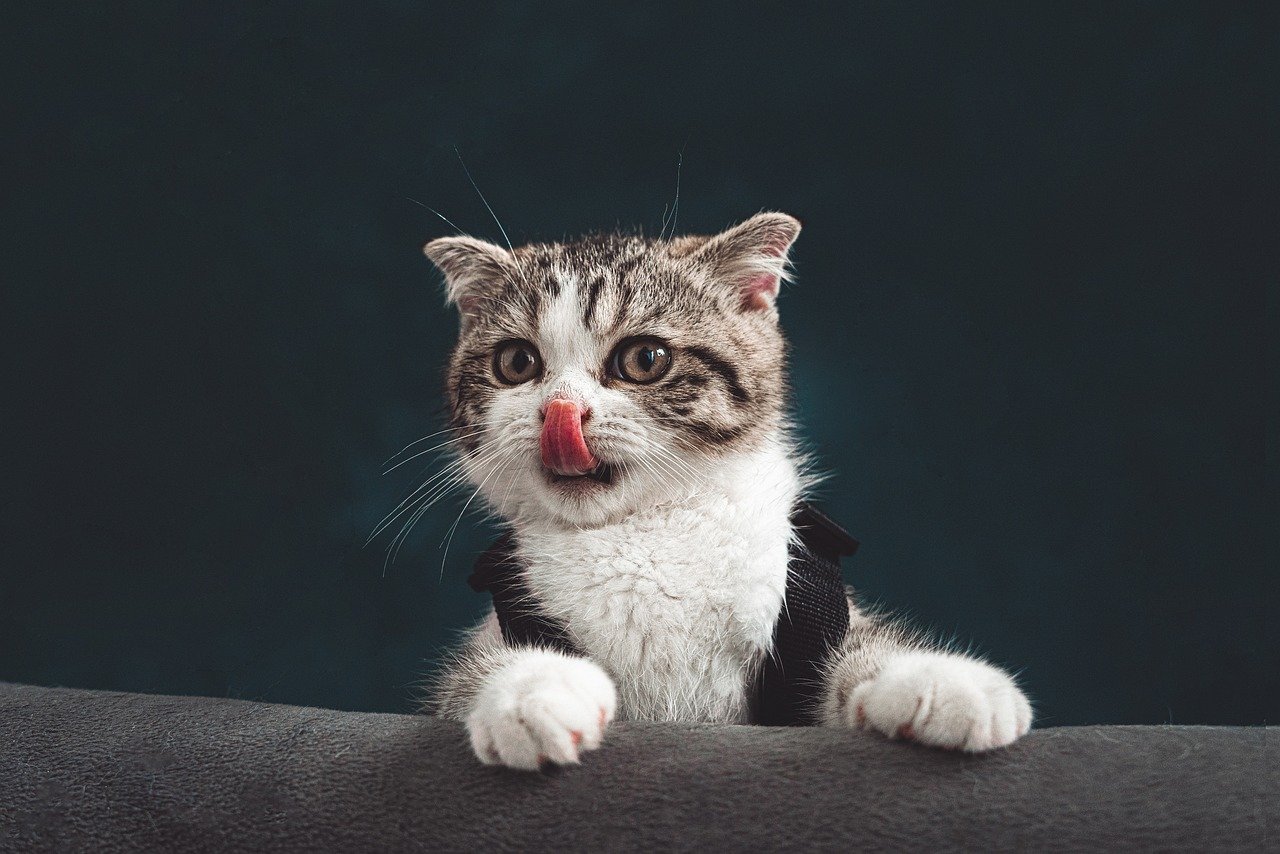Cats can lose their teeth for a variety of reasons, including dental disease, injury, or congenital conditions. While tooth loss in cats may seem alarming, many toothless felines adapt well and continue to lead happy, healthy lives with the right care. This comprehensive guide will explore the causes of tooth loss in cats, how to care for cats without teeth, and ways to ensure their well-being and quality of life.
Understanding Feline Tooth Loss
Tooth loss in cats, also known as edentulism, can occur due to various factors. Understanding these causes can help cat owners take preventive measures and provide appropriate care when necessary.
Common Causes of Tooth Loss in Cats
- Periodontal Disease: Periodontal disease is the most common cause of tooth loss in cats. It starts with plaque buildup, which hardens into tartar, leading to gum inflammation (gingivitis) and eventually to the destruction of the supporting structures of the teeth (periodontitis). This can result in loose teeth that may fall out or need to be extracted.
- Tooth Resorption: Tooth resorption is a painful condition where the body starts breaking down and absorbing the tooth structure. It can affect any tooth but is most common in the premolars and molars. The cause of tooth resorption is not well understood, but it often leads to tooth loss.
- Trauma: Cats can lose teeth due to trauma, such as falls, accidents, or fights. Fractured or damaged teeth may need to be extracted to prevent further complications.
- Genetic Factors: Some cats are genetically predisposed to dental problems that can lead to tooth loss. Certain breeds, such as the Siamese and Maine Coon, may be more prone to dental issues.
- Infections and Diseases: Infections and systemic diseases, such as feline immunodeficiency virus (FIV) and feline leukemia virus (FeLV), can weaken the immune system and increase the risk of dental problems, leading to tooth loss.
Signs of Dental Problems Leading to Tooth Loss
Being aware of the signs of dental problems can help cat owners take timely action to prevent tooth loss and ensure their cat’s comfort and health.
- Bad Breath: Persistent bad breath (halitosis) can indicate dental disease.
- Drooling: Excessive drooling, especially if it’s accompanied by blood, may indicate oral problems.
- Difficulty Eating: Reluctance to eat, dropping food, or chewing on one side of the mouth can signal dental pain.
- Pawing at the Mouth: Cats may paw at their mouth if they are experiencing discomfort.
- Red or Swollen Gums: Inflammation, redness, or swelling of the gums can indicate gingivitis or periodontal disease.
- Weight Loss: Dental pain can lead to reduced appetite and subsequent weight loss.
- Behavioral Changes: Increased irritability, withdrawal, or reluctance to be touched around the face may be signs of dental issues.
How Cats Adapt to Life Without Teeth
Cats are remarkably resilient and can adapt well to life without teeth. Many toothless cats continue to eat, groom, and play without significant issues. Here’s how they manage:
Eating Without Teeth
Cats primarily use their teeth for tearing and chewing, but they can adapt to eating without them. Toothless cats often eat wet or softened food that is easier to consume. Some cats may also continue to eat dry kibble by swallowing it whole or by slightly crushing it with their gums.
Grooming Without Teeth
Cats use their teeth for grooming, but they can adjust by using their tongues and paws more effectively. Toothless cats may require occasional assistance with grooming, especially in hard-to-reach areas.
Playing Without Teeth
Toothless cats can still enjoy playtime. Toys that do not require biting or chewing, such as soft toys and interactive wands, are ideal for play sessions with toothless cats.
Caring for a Cat Without Teeth
While cats can adapt to life without teeth, they may need some extra care and attention to ensure their well-being. Here are some tips for caring for a toothless cat:
1. Providing the Right Diet
Feeding a toothless cat requires some adjustments to ensure they receive adequate nutrition without causing discomfort.
Softened Dry Food
- Soak dry kibble in warm water or low-sodium chicken broth to soften it, making it easier for your cat to eat.
Wet Food
- Offer high-quality wet food that is easy to consume and digest. Wet food also helps maintain hydration.
Homemade Diet
- Consult your veterinarian about preparing a balanced homemade diet if you prefer to cook for your cat. Ensure it meets all their nutritional needs.
2. Monitoring Weight and Health
Regularly monitor your cat’s weight and overall health. Toothless cats may be at risk of weight loss if they have difficulty eating. Schedule regular veterinary check-ups to keep track of their health and address any concerns promptly.
3. Encouraging Hydration
Toothless cats may benefit from increased hydration, as they might drink less if they find it uncomfortable. Providing wet food and fresh water can help maintain their hydration levels.
Water Fountains
- Consider using a cat water fountain to encourage drinking. Many cats prefer running water and may drink more from a fountain.
4. Maintaining Oral Hygiene
Even without teeth, maintaining oral hygiene is important to prevent infections and other oral health issues.
Gum Care
- Gently clean your cat’s gums with a soft cloth or gauze soaked in a veterinary-approved oral rinse.
Regular Veterinary Dental Check-Ups
- Schedule regular veterinary check-ups to monitor your cat’s oral health and address any issues early.
5. Providing a Comfortable Environment
Create a comfortable and stress-free environment for your toothless cat. Ensure they have cozy resting spots, and avoid sudden changes or disruptions that might cause stress.
6. Assisting with Grooming
Toothless cats may need help with grooming, especially in hard-to-reach areas. Regularly brush your cat’s fur to prevent matting and maintain their coat’s health.
7. Adapting Playtime
Choose toys that do not require biting or chewing. Soft toys, interactive wands, and puzzle feeders can provide mental and physical stimulation without stressing your cat’s gums.
8. Monitoring for Signs of Discomfort
Watch for signs of discomfort or pain, such as pawing at the mouth, drooling, or changes in behavior. If you notice any of these signs, consult your veterinarian for evaluation and treatment.
Conclusion
Caring for a cat without teeth requires some adjustments, but with the right care and attention, toothless cats can live happy and healthy lives. Understanding the causes of tooth loss, recognizing signs of dental problems, and providing appropriate care are essential for ensuring your cat’s well-being. By offering a suitable diet, maintaining oral hygiene, and providing a comfortable environment, you can help your toothless cat thrive and enjoy a high quality of life. Regular veterinary check-ups and monitoring for signs of discomfort will also ensure that any issues are addressed promptly, keeping your feline friend healthy and happy.
- Can Cats Without Teeth Eat Dry Food?
- Cats Without Teeth
- Do Cats’ Teeth Need Special Care?
- Why Do Cats Rub Their Teeth on You?
- How to Keep Your Cat’s Teeth Clean Without Brushing:
- Why Do Cats Grind Their Teeth?
- Why Do Cats Chatter Their Teeth?
- When Do Cats Lose Their Baby Teeth?
- How Often Do Cats Need Dental Cleaning?
- Do Cats’ Broken Teeth Grow Back?
- Cat’s Bottom Teeth: Anatomy, Function, and Dental Care
- How Many Permanent Teeth Do Cats Have?
- How Many Canine Teeth Do Cats Have?
- How Many Front Teeth Do Cats Have?
- How Many Teeth Do Adult Cats Have?
- How Many Teeth Do Cats Have?
Discover more from EMMOCEB
Subscribe to get the latest posts sent to your email.






